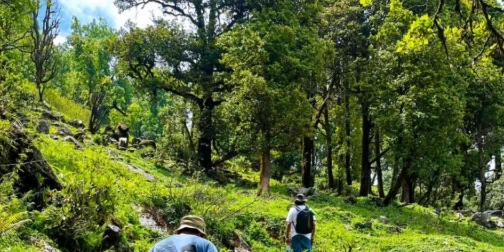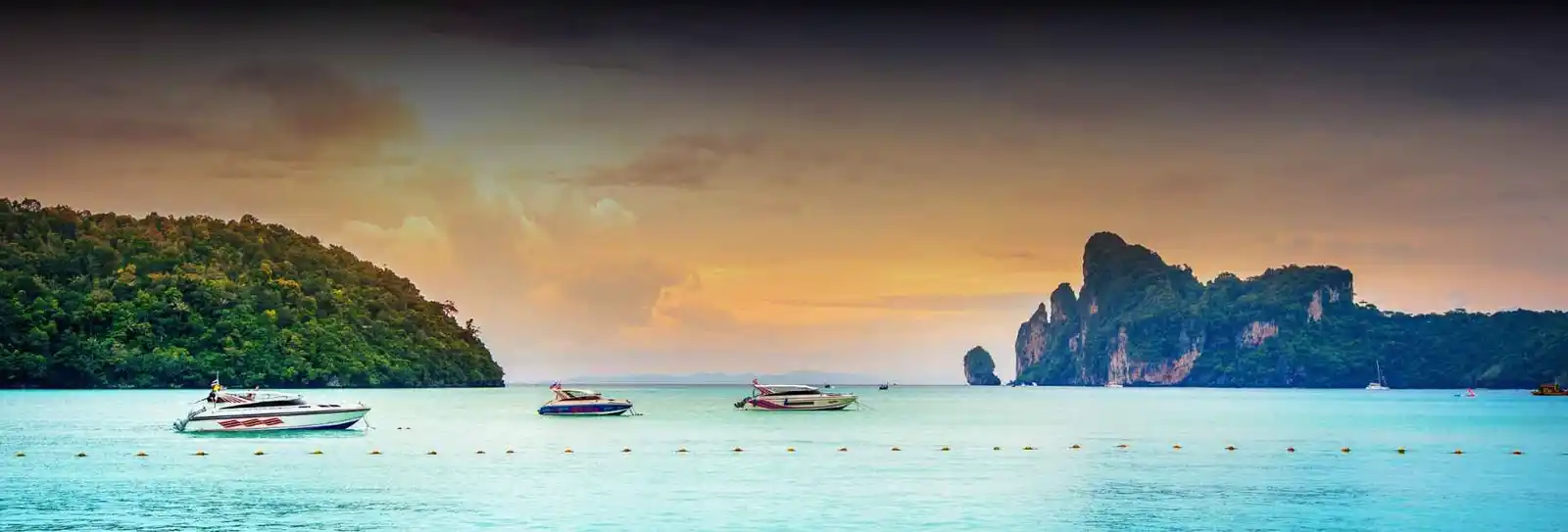
Altitude trekking is a path of mind and spirit, rather than body, one that pushes endurance, will, and determination. Every step up into thinner air and more challenging terrain, every move a thought-out one, a reminder that the climb is as much one of an inward journey as it is of being there now. As the altitude rises, the landscape changes. Green forests yield to bony ridges, and white summits soar distant like negations of nature itself. The most powerful aspect of high-altitude trekking is perhaps the challenge that it sets for your physiology. The oxygen content drops, the air gets thicker in the lungs, and your pack weighs like a rock. Altitude sickness can hit you at any point, pushing you to your limits and resilience and challenging you to them. But amidst those throes of anguish and confusion, something miraculous happens: you transform. You find yourself tuning in to the signals your body is sending you, to push yourself forward incrementally, and to access strength born of determination.The Allure of the PeaksThere is something irretrievably lovely about broad mountain peaks; their very presence is enough to command awe, wonder, and an atavistic urge to be on top. To climbers and hikers, such great mountains are icons of freedom, of challenge, of the possibility of discovery. Their beauty is not necessarily in how high they reach, but in what has been written about them over time, in what trails lead up to them, and in how they transform those who will ascend them. When you look up toward a far-off summit, a whispered vow swells up inside of you, the invitation to lift yourself over ridges and clouds. Mountains challenge you out of the hum of the ordinary and nudge you toward something greater and spacious. The higher you ascend, the more the world down below recedes from you, leaving only the sound of your respiration, the sound of gravel crunching beneath your boots, and the beat of your resolve.Relation to NatureTrekking gives you a unique and powerful chance to relearn about a relationship with nature in its most basic form. With breaks from the modern world, the trail puts you into a way of life where time begins to stretch out, and each breath, each noise, each view is intensified. The whisper of leaves, the faraway bubble of brook, the birds in motion overhead are such subtle reminders that they remind us we are part of something bigger and more complex than ourselves. Boundaries of edges between the outer world and inner self start to break down in the wild. Under the shade of the mountain, under the trees, in open spaces, you start listening deeply to the rhythm of your step, to whispers of wind, to silence that cries itself aloud. The feeling that comes is not one of energy spent; on the contrary, it comes easily as you give up the attempt to control and just get caught up in the world around you.Challenge and VictoryAdventure is a struggle and triumph journey, where every hurdle in the way is a stepping stone to personal victory. The path is never easy. Fighting mountain ridges as volatile as unpredictable weather, aching muscles, and doubts about oneself are all included. But it is through these same challenges that the spirit of adventure exists. Every test makes your body stronger, your mind tougher, and your heart more resilient, and you see things more than ever before. Something so wonderful about the victory isn't that you achieve the end, but you become bigger doing it. You start to discover in yourself a part that gets stronger through suffering, a self that adapts, understands, and grows in suffering. The mountain doesn't discriminate between male and female; it demands respect, patience, and persistence. And when you can provide them with those, it pays you back with an emotion you won't find anywhere else: achievement.Preparation for the ClimbA hike, particularly to high altitude, demands more than enthusiasm; it demands preparation, physical as well as mental. This summit is no mountain on which one makes sacrifices; she prizes humble and equipped visitors who pay her a call. Preparation to ascend starts long before your feet ever set foot on the trail. It starts with the development of endurance, muscling, and the inclusion of cardiovascular tolerance. Walking around daily, climbing stairs, running, and exercising with weights form the foundation of physical health ahead of time.Physical conditioning is only the tip of the iceberg.The other half is psychological preparation. Trekking puts your patience, endurance, and will to the ultimate test. There will be spells of exhaustion, fear, and self-doubt, particularly when the altitude is thinning and the gradient is steep. A mental attitude that welcomes discomfort and sees challenges as part of the journey can be the difference between success and failure. Meditation, visualisation, and goal-setting can prepare the mind for the trek. Physical Conditioning for Trekking: Conditioning Your Body, Endurance, and Resilience. Physical conditioning is the most important factor in a safe and successful trekking adventure. Whether you are planning a day hike or a multi-day high-altitude adventure, your body strength, endurance, and resilience play the biggest role in how well and comfortably you can manage the physical challenges of the trail.Backpacking involves steep pitches, hard ground, long walking times, and packing factors that demand a conditioned body and mind. Condition yourself beforehand, and optimise your performance as well, and it also reduces the risk of fatigue and injury, so you can make the most of the experience. The initial physical fitness attribute is cardiovascular endurance. Trekking necessitates hours of sustained movement, especially in mountainous terrain where oxygen levels reduce with elevation. Running, brisk walking, cycling, swimming, and climbing stairs are some of the exercises that condition lungs and a robust heart. Perform a minimum of 30–45 minutes of cardio training, four to five times weekly, gradually raising intensity to simulate the physical load of trekking.Technical Trekking Skills: Preparing for the Way ForwardGet physically prepared to trek because that's just plain necessary, but gaining technical skills could genuinely enhance your safety, competence, and sense of confidence along the way, particularly on more strenuous or mountain-class treks. Proficiency in basic technical skills allows you to climb more difficult sections, be better equipped to handle the unexpected, and obtain the best possible outcomes from your adventure.Navigation is among the technical skills required.In travelling with a guide or in a group, having the ability to read topographic maps, a compass, and navigate using a GPS receiver or mapping software (such as Gaia GPS or AllTrails) is important. These enable one to remain on course, not become lost, and cross one's line of travel. Being able to read trail signs, natural features, and elevation profiles can be extremely useful in backcountry settings. Mental Conditioning for Trekking. Where physical conditioning gets your body ready for the trail, mental conditioning gets you ready to ride out the worst of a trek. Trekking, particularly in bad country and high country, pushes your emotional strength, patience, and inner toughness at least as hard as it pushes your muscles. From weather and exhaustion to loneliness and sheer length of some treks, mental toughness most frequently is what separates quitting from hanging in there. The first mental preparation is establishing realistic expectations. Understand that treks are not picture perfect. Sore legs, chilly nights, and bouts of self-doubt will ensue. But being able to embrace those as part of the adventure can shift your mood from resisting to accepting. Get into the mindset of enduring discomfort, not out of fear, but curiosity and resolve.The Risks and Rewards of TrekkingTrekking is an odyssey of sweeping grandeur, self-improvement, and lifetime memories, but with the attendant dangers each visitor must endure and prepare himself against as well. From hazardous weather and boulder-strewn terrain, and altitude to fatigue, the trail can be deadly, as it's lovely. But it is precisely this balance of danger and reward that trekking itself as a sport exists upon.The dangers are real and many.Trekkers can be confronted with off-season weather, ice or slope slippage, dehydration, injury, and illness, most of all, in isolated areas where medical help is hours or days away. High-altitude treks add another level of risk, with lower air and the possibility of altitude sickness. Inadequate planning, poor equipment, or overestimating one's capabilities can turn a fun trek into a nightmare trek. With this being the reality, preparation, physical fitness, technical skills, and mental resilience are not a luxury but a necessity.Risk Assessment and Management for TrekkingRisk management and assessment are extremely integral parts of any successful trekking expedition. While the benefits of trekking are largely enormous, risk perception and preparedness against it could be the difference between a successful, safe, enjoyable expedition and one that becomes a disaster. Risk management means identifying, analysing, and avoiding probable risks before embarking on a trek, and being prudent while trekking.Safety First: Enjoy Your Trekking Experience SafelyTrekking in the wilderness is an experience, but safety should always be top of mind. You are a veteran trekker or an inexperienced one; safety should always be the top priority, so you can enjoy your trek to the fullest and come home alive. There are several key aspects of trekking safety, from proper preparation to being aware of your surroundings, and each one plays a vital role in minimising risks and handling any challenges that may arise. The first step in staying safe is pre-trip preparation. Thoroughly research the trail, weather conditions, and terrain to understand what you’ll be facing. Always notify a relative or friend of your travel plans, departure dates, and return dates, along with emergency contact numbers. Carry a map, compass, or a GPS device, and be familiar with operating it if you are lost abroad. Ensure that you have a complete and well-stocked first-aid kit with you, and take along any prescribed medication you might need, e.g., emergency medication like an epinephrine injector (if you have an allergy to bee stings, for example).Environmental IssuesNature's farthest and least disturbed areas are best reached by trekking, and it imposes the responsibility of maintaining the environment. To leave as little a footprint as possible, let's observe some Leave No Trace ethic, putting trash in its place, leaving animals be, and staying on paths. Refill water and avoid single-use plastics. Don't pull wildflowers and don't bother animals. Be quiet and be quiet. By keeping our world of nature as gorgeous as it is, we can allow generations to come to enjoy the beauty and wonder of these stunning landscapes as well.Leave No Trace: Sustaining Nature for the Next GenerationLeave No Trace (LNT) is a guiding philosophy that allows trekkers to leave minimal traces in the environment such that natural beauty and integrity would be retained for generations to come. LNT principles promote ethical outdoor recreation that causes the least possible damage to wildlife and ecosystems. The most applicable principles listed below are:Plan and Prepare: Research your trek, gear up appropriately, and familiarise yourself with regulations in the region. Proper planning avoids deciding at the last minute, which may ruin the environment, like camping illegally or taking a side trail.Durable Surface Travel and Camping: Camp and travel on trails and campsites to prevent sensitive vegetation from being trampled. Where no trail is available, travel on durable surfaces such as rock, gravel, or sand. This reduces both plant protection and soil erosion.Dispose of Waste Correctly: Clear off all the material, natural waste, such as food. Squeeze out only enough biodegradable soap for cleaning and use it at least 200 feet away from water sources. Provide waste bags to dispose of human waste if toilets are not present, and employ proper disposal of the waste to leave the area clean.Don't Take Anything with You: Never collect rocks, flowers, or disturb animals to leave nothing behind for the subsequent set of hikers. Thus, the subsequent hikers will get an opportunity to experience the very same pristine beauty that you will get to experience.Reduce Campfire Impact: Prepare meals on a camp stove instead of having a fire. If a fire is necessary, utilise existing fire rings and burn only small dead wood. Ensure all fires are fully extinguished to prevent wildfires.Conservation Initiatives in Trekking SitesConservation is essential to save the natural beauty and diversity of trekking destinations. As more people go out, there is pressure on the environment, and the trekkers, local communities, and organisations must come together to save the environment. Conservation saves ecosystems, wildlife, and landscapes so that future generations can see the same natural phenomenon. Habitat conservation is among the most important elements of conservation.There exist certain trekking routes that go through sensitive ecosystems, including forest, wetland, and alpine meadow, with a diverse species of fauna and flora. State government departments and departments of the central government and conservation organisations try to demarcate protected habitats as national parks, wildlife sanctuaries, and biosphere reserves, where controlled utilisation of man tries to maintain local livelihood and nature conservation. Here, conservation will be more a matter of stopping invasive species, restoring harmed ecosystems, and maintaining biodiversity.The Climbers' Community: Bridging Poles with AdventureIt's not about being a climber and a trekker, it’s not necessarily about climbing a hiking trail or a mountain, so much as about what trekkers and climbers share in common: common experience and bonding created. Climbing culture is a living thing, consisting of individuals of all varieties united by the shared passion for challenge, adventure, nature and the outdoors. Camaraderie is a strong force of climbing culture, creating a world of community support, respect, and encouragement. Perhaps the greatest thing about climbing culture is a sense of shared purpose. Whether they climb a local peak or are in the hunt for an elevated-level endeavour, the mountaineers will be encouraged to rely on their comrades in dealing with physical, psychological, as well as technical problems. Together in distress, the mountaineers use their mates as instruments of assistance, either equipment support, going over tricky parts for them, or plain morale to buoy them over bouts of tiredness. Through this mutual support, lasting ties are established that extend beyond the trail as well.Learning from Others: Growth Through Shared ExperienceOne of the most valuable aspects of trekking and climbing is the opportunity to learn from others. Whether you’re an experienced adventurer or a beginner, the collective wisdom of the community can significantly enhance your journey, offering insights into everything from technique and gear to navigating challenging conditions. The outdoors is an environment where knowledge is shared freely, and there’s always something new to learn from fellow trekkers, climbers, and local guides. Your seasoned trekkers and climbers are usually more than happy to pass on their knowledge. From the best practices for coping with altitude sickness to how to pack, seasoned travellers have some advice that can keep you away from rookie mistakes and improve your trekking experience overall. Their acclimation to hard country will be able to help you do so safely, keep you at peak energy levels after gruelling days, and get you out of jail any time.It is particularly worth it to first-timers as much as trekking and climbing are concerned, because it can turn what otherwise might have been an exhausting trek into a trek capable of sustaining you. No doubt, one of the most indispensable aspects of mountaineering and trekking is exchanging stories and experiences with other travellers. This cannot be acquired from books or manuals. The trails and mountains possess this great power to bring people from all walks of life together and create intangible but very real connections that transcend language, culture, and geography. Where the failures and successes of climbers and trekkers become the outdoor community experience, theirs is more than mere bond-building tales, though. Theirs is also an invaluable repository of inspiration, learning, and motivation.Why Book with escape2exploreWhen exploring two-day trips from Bangalore and beyond, escape2explore stands out as a trusted name in adventure and experiential travel. Here’s why hundreds of travellers choose us for their getaways:Trusted, Well-Reviewed Local Operator: escape2explore has gained the trust of thousands of content tourists all over India. With persistent positive feedback and an unblemished reputation for delivering quality experiences, we assure you that your experience will be hassle-free, memorable, and value-packed. Our insider local knowledge guarantees that you will always be in safe hands.Seasoned Guides: Our trips are led by friendly, trained, and professional guides who are passionate about the outdoors and your safety. Whether it's a beach trek, a cultural tour, or a spiritual walk through temples, our team knows the terrain, the stories, and how to make each moment count.Safe & Curated Itineraries: Your safety is our number one priority. Our tour packages are thoughtfully crafted with safety measures, researched accommodations, and easy travel arrangements. We take care of the details so you can have the experience hassle-free and worry-free.Unique Experience That You Won't Find Anywhere Else: With escape2explore, you discover more than the tourist attractions. We go off the beaten track with hidden beaches, unusual treks, offbeat cultural destinations, and true interactions.Read: Friendly Trekking in India | Trekking Guide | Hidden Treks of Karnataka | Everest Base Camp Guide |Netravati vs Kudremukh


